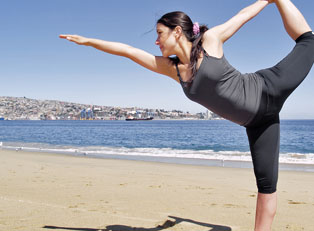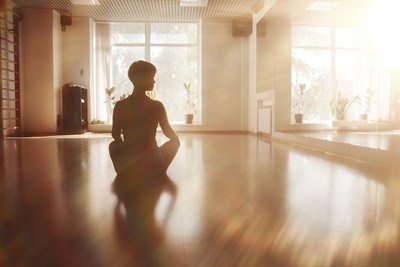History
In Sanskrit, Ashtanga means "eight limbed." Accordingly, Ashtanga Yoga incorporates the 8 limbs of yoga that are mentioned in the Yoga Sutras of Patanjai. Ashtanga Yoga was created by K. Pattabhi Jois in 1949. Jois was born in 1915 and began studying yoga at age 12 under Tirumalai Krishnamacharya, who is considered one of the most influential yoga instructors. In 1948, Jois opened his own institute, the Ashtanga Yoga Research Institute, in Mysore, India.
Jois claimed to have based the Ashtanga Yoga methods on the teachings in an ancient text, called "Yoga Korunta." Although he never read it, the text was passed down as an oral tradition from his teacher. The oral tradition is said to have included several asana groupings, which are included in Jois's Ashtanga Yoga.
Jois wrote one book, which was translated into English in 1999 before he passed away in 2009 from natural causes. His institute continues to draw students from around the world. The institute is now run by his grandson, R. Sharath Jois.
Basic Principles
One of the basic principles of Ashtanga Yoga is the practice of vinyasa. Vinyasa refers to a series of asanas, or postures, that are liked together in a flowing movement. Breath is another important concept in vinyasa movements. For example, asanas are held for a certain number of breaths before transitioning to a new asana. The length of an inhalation or exhalation determines the length of time when transitioning from one asana to the next.
Breath, in itself, is another important principle of Ashtanga Yoga. Ashtanga Yoga incorporates a breathing style known as Ujjayi. This type of breathing is based in the diaphragm and produces steady, cyclical breathing. This type of breathing creates a sense of calmness, with intense mental focus. By combining Ujjayi with vinyasa, the body experiences an increase in internal heat, which helps to purify the body through improved circulation and sweat.
A third principle of Ashtanga Yoga is bandha. A bandha refers to a muscle lock or contraction. This is attained by contracting or tightening certain groups of muscles. Bandhas are used to remain in an asana or to assist in transitioning in or out of an asana. One example of a bandha is the Uddiyana bandha. This abdominal bandha is performed by exhaling all air and then pulling the navel in toward the spine. This bandha is used to support breathing and to strengthen core muscles.
Regular, daily practice is emphasized in Ashtanga Yoga. Traditionally, it is taught in Mysore style, which refers to the city where Jois's school is located. In this style, students move through the practice at their own pace while being supervised by a teacher. This might take 1 to 2 hours to complete.
Poses
Ashtanga Yoga is based on 6 series of poses. A student progresses through these at his or her own pace. The first series is called Yoga Chikitsa, which means yoga therapy. It is designed to build stamina, strength and flexibility. This is a series of 75 poses that realigns the spine and detoxifies the body. The series begins with sun salutations and continues on to include standing poses, seated poses, inversions and relaxation. For most students, this takes about 2 hours to complete.
The second series is called Nadi Shodana, which means nervous system purification. You must be strong in the first series before moving on to the second. This second series strengthens and cleanses the nervous system.
There are 4 additional advanced series, which are collectively called Sthira Bhaga, meaning divine stability. These incorporate extremely difficult arm balances, which are only appropriate for advanced students.
Yoga studios that offer Ashtanga classes are often teacher-led classes. This differs from Jois's traditional self-directed approach. In a teacher-led class, the instructor walks you through the order of the poses. Most classes are usually based in the first and second series.
Who This Is For
Ashtanga Yoga is for people who enjoy athletic and vigorous activities. Those seeking slow moving poses or only relaxation exercises should not try this method. This style of yoga has a sense of order to it, which appeals to many people.



